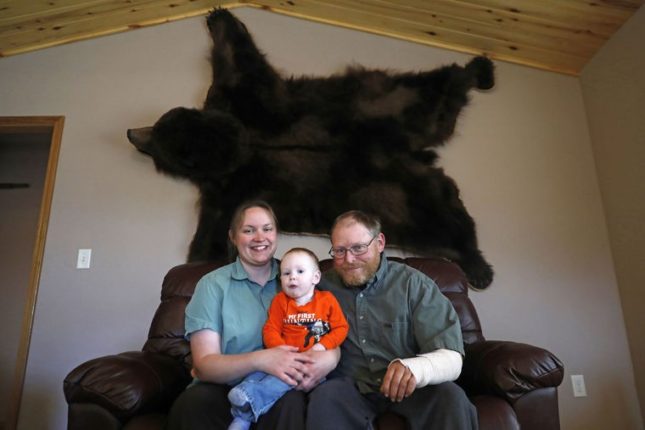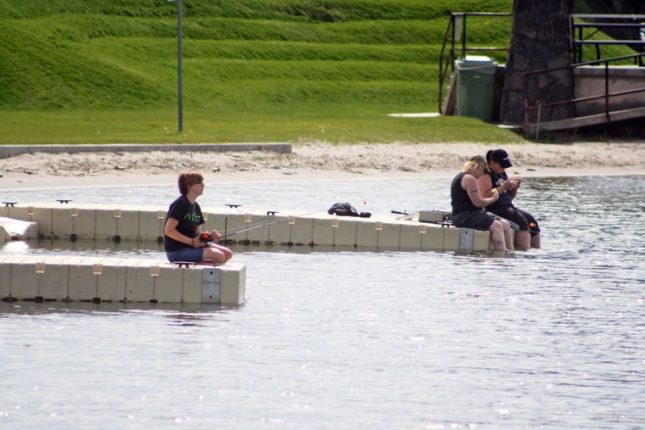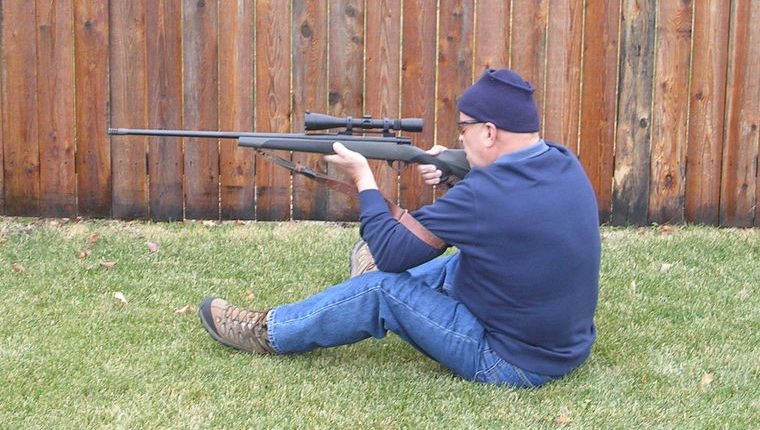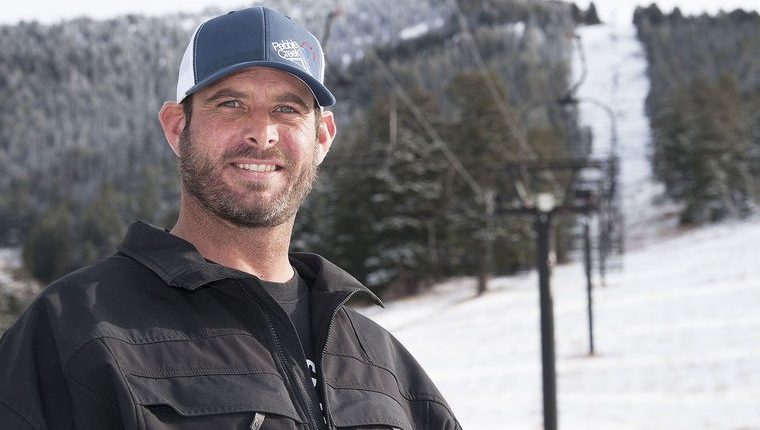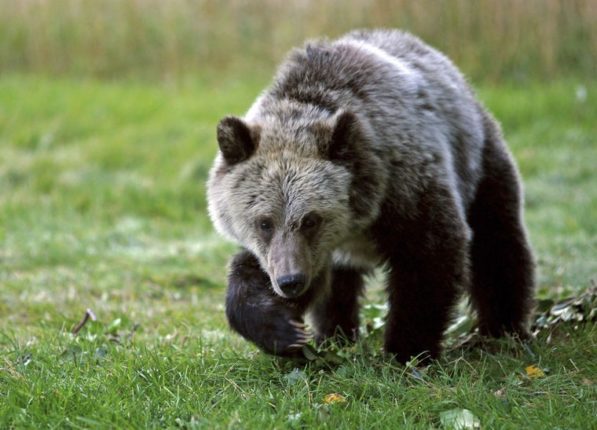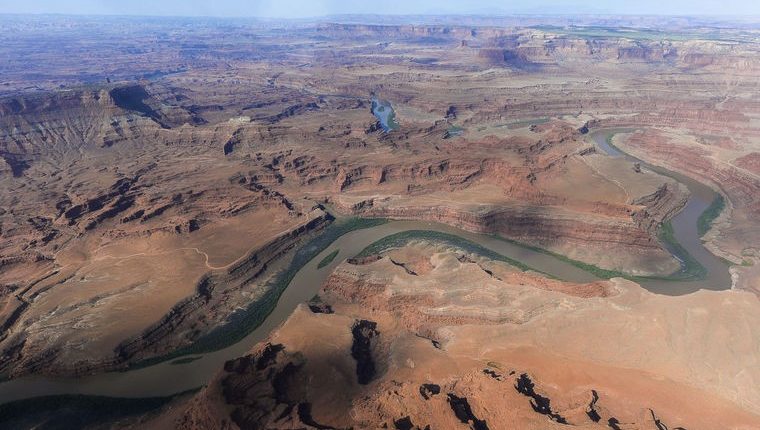CODY, Wyoming — At the already too-late warning shout of “Bear!” Jon Sheets tilted his head lamp at the darkness and was startled by a charging grizzly a foot away.
Sheets grabbed at the bear’s thick fur with his left hand and swiftly raised the bloody knife he was using to field dress a dead elk.
“His ears were pinned back and he was coming hard,” Sheets said.
In one uppercut motion the Boulder Basin Outfitters guide stabbed the animal in the side with the 7-inch blade, diverting it from his hunter into an attack on him.
The battle was a mismatch between the 5-foot-9, 215-pound man and the 750-pound bear. Right ear nearly ripped off, left elbow crushed, bite and claw marks on his back and shoulders, Sheets briefly passed out during the grizzly mauling.
He thinks so, anyway. Some memories are hazy. Some are vivid, such as the bear’s tooth that broke off in Sheets’ skull and stuck there.
“It felt like an hour,” Sheets said of the attack that probably lasted a few minutes. “I could feel him on the back of my head.”
Sheets, 46, a lifelong hunter, and the middle-aged woman from Georgia who was his client, were bloodied and battered, required rescue and were flown from the Washakie Wilderness mountains on the outskirts of Cody to hospitals for treatment.
The grizzly attack at dusk was the beginning of a long night of fear and worry as the drama played out.
After hours of immediate surgery, a week at the Billings Clinic in Montana, a daily routine of changing bandages, being shelved from work at Summit ESP in Powell for up to two months and limping around his house in bedroom slippers because of a mildly broken leg, Sheets is in fairly good health and spirits.
This Thanksgiving, he had plenty to be thankful for, starting with his life.
“Mostly, I was thinking I wanted to see my wife and son,” Sheets said of Genevieve and Asher, 1 1/2.
Human-bear conflicts
This scenario is every hunter’s nightmare in the Wyoming wild where bears are common and believe every food source belongs to them, especially in fall, and sometimes treat humans as gnats to get at it.
In this year when the Greater Yellowstone grizzly was delisted by the U.S. Fish and Wildlife Service from federal protection under the Endangered Species Act and their management returned to Wyoming, Montana and Idaho, there have been 13 bear-human conflicts in the demographic monitoring area, injuries to four people and seven bears shot.
Numbers vary annually, but 2010 was a high year. There were 16 conflicts, five people injured and one killed, plus 10 bears killed.
The first recorded bear attack death in Wyoming occurred in 1892. Recent Wyoming deaths from bears include a fatality in Yellowstone National Park in 2015 and another in the Bridger-Teton National Forest in 2014.
Game and Fish invests considerable time, energy and money educating the public on being bear aware while recommending carrying bear spray in the backcountry.
Sheets said he was toting a .44 magnum and bear spray, and the hunter was packing bear spray, but the incident flared up in seconds.
“There was no time to do anything, except use what I had in my hand,” Sheets said.
The hunt begins
The hunt began Oct. 25, a women’s-only cow hunt offered by Boulder Basin each fall. There were five women in the party and three guides.
On horseback, the group ascended to a camp of wall tents above 9,000 feet and scouted higher terrain.
Elk remained distant, the only ones seen five miles away. Retreating to camp, riders picked their own trails. Descending 200 yards, Sheets and his hunter spied about 10 elk in a meadow.
At dusk they dismounted, and she dropped it with two shots. They were only two miles above camp. Sheets began quartering the elk.
While Sheets carved, the woman talked, loudly as instructed, making noise to frighten away bears. Sheets was 45 minutes into the job when the devil knocked on the door. Darkness had floated in and the bear appeared like a ghost.
The knife piercing its hide provoked the bear and it swung its head and chomped Sheets’ left arm, biting to the bone. The force of the jaw closing shoved Sheets’ fingers halfway up his arm and broke it in two places, bones poking through the skin.
The bear then sprang at the woman, ripping at her, and returned to Sheets, who was flat on his stomach. Teeth and claws raked him and the bear bounded up and down on his back, using him as a trampoline.
“I could feel him chewing on my ear,” Sheets said.
Then the bear snatched the elk meat, dragging it right over Sheets, and disappeared back into the night.
After the maulings, Sheets and the hunter lay about 30-feet apart. Dazed and his entire body aching from the pummeling, Sheets said he heard the woman call out she was hurt.
They both were. The hunter crawled to the horses because she had a bite weakening one leg. Sheets could stand and walk.
“She thought she was blind,” he said. “She had head lacerations.”
Sheets washed off her blood. She looked him over and said, “You’re pretty messed up.”
They struggled onto their horses. Sheets radioed Boulder Basin boss Carl Sauerwein at camp to report an emergency and began riding on a crisp, clear night, with the Big Dipper bright in the sky and the temperature below freezing.
Sauerwein and another from camp mounted up within five minutes, knowing only fragments of what happened.
“It was scary,” said Sauerwein, who has operated the company for 11 years and been guiding since 1989. “We lost radio contact. She had dropped the radio. It was pretty unnerving.”
Sheets was riding in front with the hunter trailing slightly.
“She was freaked out,” Sauerwein said. “She had some cuts and said the bear bit her leg and it really hurt.”
In camp the dining table was cleared and the kitchen tent turned into a triage unit.
Sauerwein radioed the Park County Sheriff’s Office, reporting the need for medical help.
Sheets, his good friend, as well as employee, was drenched in blood and Sauerwein was upset at a client being injured in his care for the first time. He was startled to see the bear tooth sticking out of Sheets’ head.
Certain he was going to lose consciousness, Sheets scrawled his wife Gen’s cell phone number on his hand and asked for someone to call her.
Reaching her with the facts and reassuring her evolved into an all-night adventure.
Sauerwein’s call to the sheriff’s department triggered the next phase of the rescue. Two helicopters were dispatched, one flying Sheets to Billings and one taking the hunter to a trauma center in Idaho Falls.
A long night
In Billings, Sheets was swiftly sent into surgery for his torn-apart ear and left arm.
At home in Powell, Gen Sheets had her usual trouble putting Asher to bed. The youngster took a lot of convincing and is a light sleeper. So she turned the ringer off on her phone and then fell asleep next to him.
When Gen Sheets woke and looked at her phone at 1:14 a.m. she saw she had 51 missed calls and 30-something texts.
“I thought, ‘What the heck?’” she said.
Many messages simply said, “Pick up.”
She spotted a contact from Sauerwein saying, “There’s been an accident and Jon’s being life-flighted to Billings.”
Gen is just as avid a hunter as Jon, who bagged his first elk at 13 after hunting prairie dogs as a youth. She shot 27 pheasants in one season when in advanced pregnancy. On their living room walls hang two bear skins. Jon shot one near Haines, Alaska, where they used to live and she shot the other, larger one, on Admiralty Island, Alaska.
She knows hunting is a sport where things can go awry and did not panic even if the message was troubling. She might have if Jon had not been dissuaded from sending a photo of his Vincent-Van-Gogh-damaged ear along with the “Love you” note she found in the message mix.
Thinking Jon had probably been wounded by an errant gunshot, Gen telephoned the Billings emergency room.
“I understand you have my husband there,” she said. “The nurse said, ‘He’s a real hero. He stabbed a bear and saved a lady.’”
But Jon could not get on the phone. He was in surgery, a short one, she was told.
“I started packing and it was 3 o’clock in the morning and they hadn’t called me,” she said.
She woke Asher for the 95-mile drive to Billings. He stayed awake all the way to Laurel, just outside of Billings.
Gen pulled up to the hospital at 4:30 a.m. and was told Jon was still in surgery. She was frightened something had gone wrong. Around 6 a.m., after five hours of surgery, she was called by a nurse who said Jon was awake and she could come to Billings.
“I’m in the parking lot,” Gen said.
When she and Asher entered the hospital room, the first thing Jon said was, “We won. We got the first elk in camp.”
Although she considers her husband goofy anyway, she thought that was probably the drugs talking.
Search for the bear
When bear-human conflicts erupt, a Game and Fish protocol kicks in.
Cody regional wildlife supervisor Dan Smith was notified of the incident by the sheriff’s office the next morning and drove to Billings to interview Sheets.
“Within reason, we are going to go where they are,” Smith said, though it is unusual to travel out of state.
Smith sent two others from the department to the site. Sauerwein also returned to the area to retrieve belongings of Sheets and the hunter.
“We try to do that as soon as possible,” Smith said of scoping the location, “to try to determine what happened.”
The scan of the site turned up no sign of the bear or the elk carcass.
“We were unable to take any action,” Smith said.
DNA was taken from Sheets’ knife, but with no other reports of a bear acting aggressively in that area, this one is free for now.
Moving on
The bear attack is not going to scare Sheets indoors.
He has a noticeable scar on the back of his head, parting his red hair, a magnificent surgically repaired looks-normal ear, and an uncounted number of stitches and staples in his body. But he seemed most irritated about the bear tooth disappearing and being unable to deer hunt this month. He wanted a disabled exemption to hunt from the road, but his doctor would not provide a note, insisting he rest.
Since Sheets had to pause conversation because fluid was leaking out of his left arm, requiring more gauze be applied, the doctor cannot be accused of being an alarmist.
If Wyoming ever conducts a bear hunting season Sheets hopes this experience helps get him a license.
“When we get bear hunting, I’d like to get some preference points from this,” Sheets said.
Sheets heard the hunter will make a complete recovery, but for weeks did not get a response from telephone and text messages of concern. Then last Saturday she texted she will communicate after the holidays.
This ordeal does not have a finish line for Sheets. He faces regular checkups and more surgery is planned.
During the mauling, Sheets thought of “surviving the moment and then surviving the hour.”
Jon Sheets was unlucky to be attacked, but he knows he is lucky to be alive.

